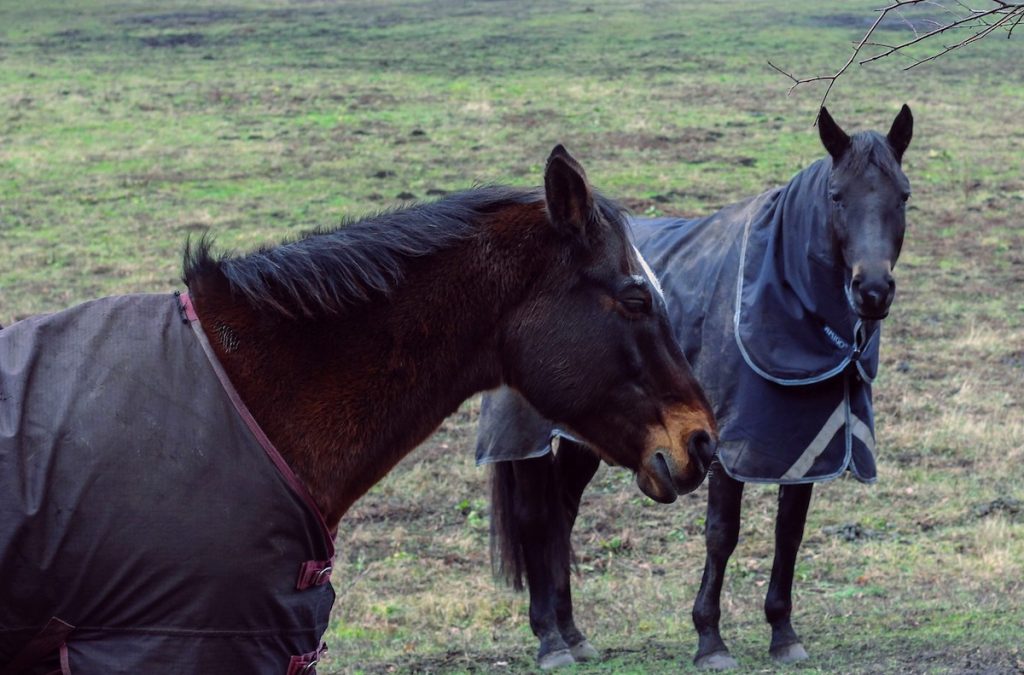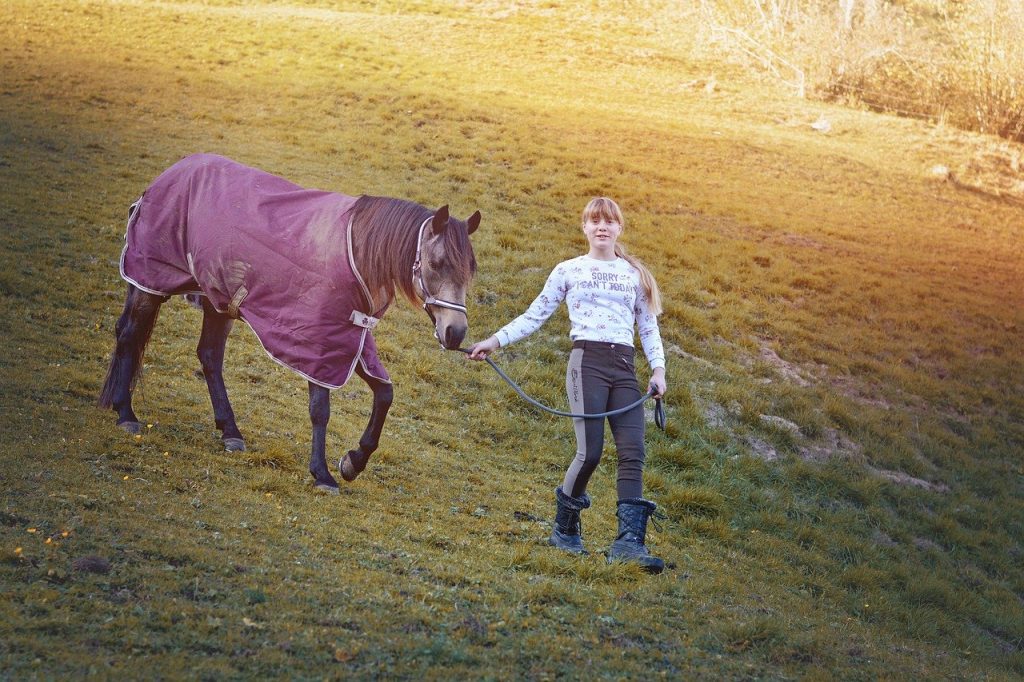Blanket season is here! Make sure you and your horse are ready.
As you’ve probably noticed, the weather has taken a turn. The days are shorter, colder, and rainy. Fall has made itself known! If you haven’t already, it’s time to pull out your horse’s sheets and blankets or order new ones. Winter will be here shortly, and with it even colder weather!
Purchasing a new blanket can be overwhelming! There are so many different sizes, designs, and fills. It can be hard to decide what your horse needs, if anything. Hopefully, this guide will help you get started in the right direction.
Types of Blankets
Most blankets are either for the stable or turnout. Simply put, stable blankets are for indoor use. They’ll keep your horse warm and clean in their stall. A turnout blanket or sheet is waterproof and will keep a horse dry and warm outdoors. A sheet usually has no fill, while a blanket has various grams of fill that keep your horse warm. Lastly, some have hoods, belly guards, and tail flaps. Each brand and type offer something a little different and unique.

Keeping Your Horse Warm
The warmth of the blanket is usually determined by the fill. The higher the number of grams the warmer it’ll keep your horse. Follow this chart!
- No Fill- Sheet
- 100 Gram- Light Blanket
- 150 Gram – Light/Medium Blanket
- 200 Gram- Medium Blanket
- 250 Gram- Medium/ Heavy Blanket
- 300+ Gram- Heavy Blanket
A sheet or lightweight blanket is good for 40-60 degrees Fahrenheit, a medium for 20-40, and heavy for below 20. These are just estimates though! You’ll want to factor in if it’s raining/snowing, the condition of your horse, their age, and other factors.
Determining Durability
Yes, there’s even more options when it comes in sheets and blankets. The denier of a blanket is the thread thickness of the outer shell. Basically, it’s how tough the blanket is. The higher the number the stronger it’ll be! Here’s another helpful chart.
- 210 Denier- Easily Ripped
- 420 Denier- Light Strength
- 600 Denier- Medium Strength
- 1200 Denier- Heavy Strength
- 1680 Denier- Extra Heavy Strength
- 2100 Denier- Supreme Durability
Only you know how playful and wild your horse gets in the field or stall. If you want something that will last, a denier of 1200 or more is recommended. A gentler horse may get away with something less, though you should also consider their herd mates. Some friends enjoy biting and tucking on others’ blankets.

The Perfect Fit
After you’ve decided the type of blanket you want, you’ll need to measure your horse for a good fit. This should be done with a flexible tape, and preferably with the help of another. One person should hold the horse and one end of the tape at the center of the horse’s chest. The other person should run the tape alongside the horse’s body till they reach the rear of the hind leg.
In the United States, blanket measurements are usually in inches. Round up if the horse falls in the middle of two different sizes offered by the company.
Certain brands have features like gussets, which allow for greater movement in the front legs. There are also various chest closures. You may prefer one type over another.
Ultimately, most horse owners have two to three blankets for their horse. A sheet for the rainy season, medium for colder days, and a spare for swapping out wet ones. You may be able to get away with one, depending on your barn set up and horse.
Love this post? We think you will like The Do’s and Don’ts of Horse Blanketing and The Great Debate: To Blanket or Not?



